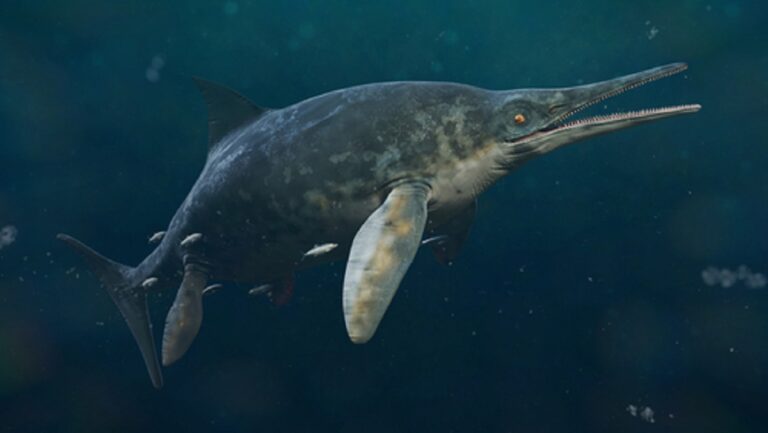Imagine strolling along a beach in Somerset, UK, and stumbling upon a jawbone so large it looks like something straight out of a Jurassic Park film. This isn’t a scene from a movie, though; it’s the remarkable story of a recent paleontological discovery that has reshaped our understanding of marine life from millions of years ago.
The Discovery in Somerset
Eight years ago, fossil hunter Paul de la Salle found a huge, oddly shaped jawbone on the coast of Lilstock, Somerset. This incomplete fossil was identified as part of the lower jaw of a giant marine reptile. However, without additional specimens, scientists, including De la Salle, hesitated to declare it a new species. Their patience paid off when, in 2020, another jawbone was discovered nearby by amateur fossil hunters Justin Reynolds and his then 11-year-old daughter, Ruby. This find led to a groundbreaking study recently published in the journal PLOS One.
Identifying a New Giant
The team, which included both seasoned and amateur paleontologists, worked to piece together the jawbones, which they found were from the same time period but different individuals. These fossils, found about 10 kilometers from the original site at Blue Anchor, revealed that the creatures were about 25% larger than the previously known giant ichthyosaur, Shonisaurus sikanniensis.
After extensive research and comparisons with other ichthyosaur specimens, the team concluded they had discovered not just a new species, but a new genus. They named it Ichthyotitan severnensis, or “giant fish of the Severn,” referring to the nearby Severn River.
Giants of the Marine World

The size of Ichthyotitan severnensis is estimated to have been around 26 meters long, roughly the size of a blue whale. This estimate is based on simple scaling factors commonly used in paleontology. Despite the limited remains, the unique features of the jawbones were enough to differentiate this species from others.
The Significance of the Discovery
This discovery is particularly significant because it predates a global extinction event by just a few million years—an event that forever changed the biodiversity of Earth’s oceans. The fossils suggest that Ichthyotitan belonged to the Shastasauridae family, which vanished in the late Triassic mass extinction. This period was marked by significant volcanic activity, which may have led to sudden spikes in carbon dioxide levels.
The Role of Community in Paleontology
What’s inspiring about this story is the role of community involvement in scientific discovery. Justin and Ruby Reynolds, with no formal training in paleontology, made a crucial contribution to this discovery. Ruby, now a published scientist, found and helped identify a prehistoric giant when she was just a teenager. This underscores the idea that anyone with a keen eye and a bit of luck can make significant contributions to science.
Reflections on the Giants of the Past
It’s awe-inspiring to think about giant reptiles, comparable in size to the largest mammals today, swimming in the seas that once covered what is now the British Isles. These jawbones not only provide a glimpse into our planet’s distant past but also remind us that there may still be many more secrets waiting to be uncovered along our shores.
This discovery not only adds a new chapter to the book of marine paleontology but also serves as a powerful reminder of the enduring mystery of the natural world and the unexpected ways in which it can intersect with our everyday lives.






